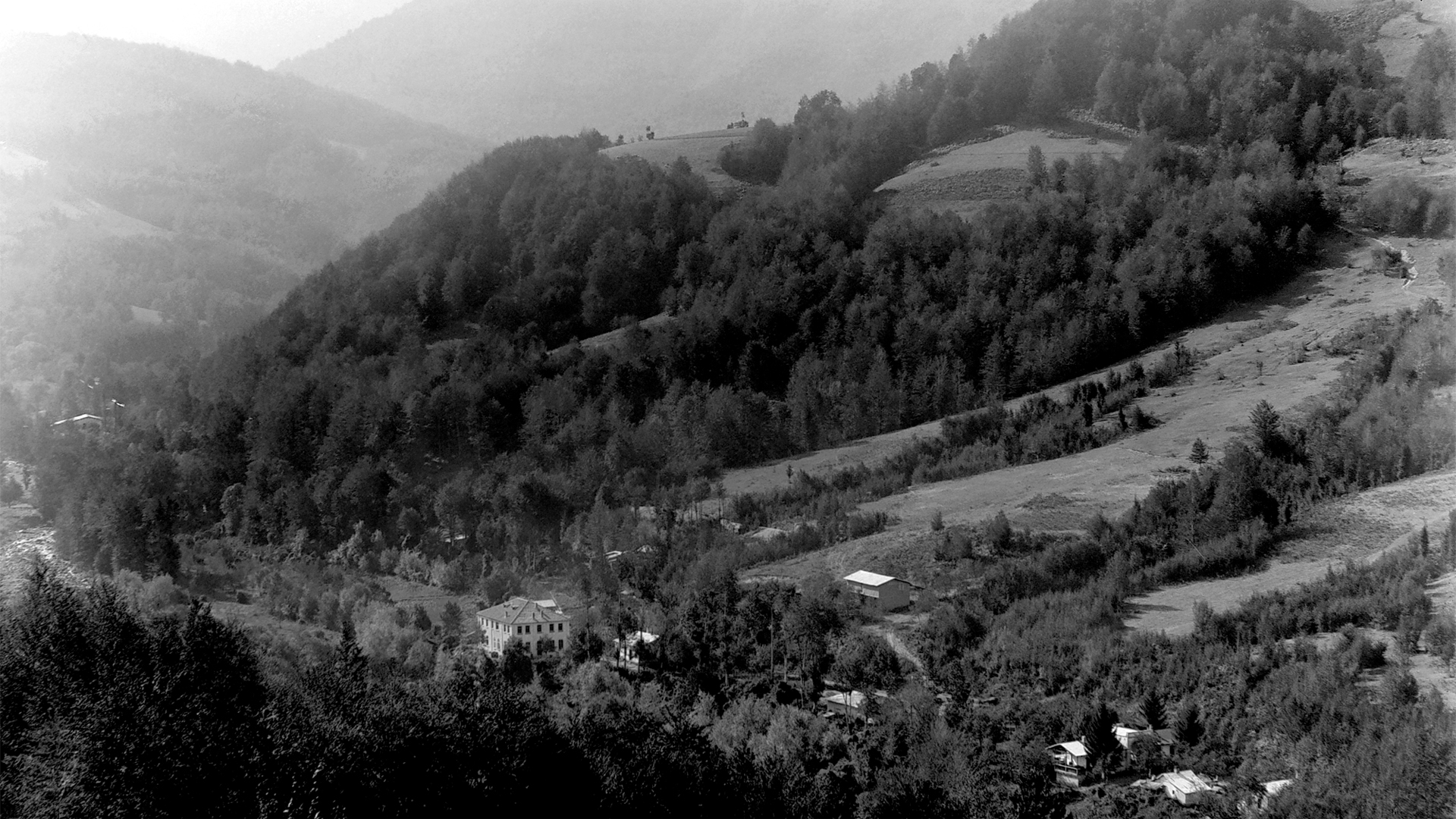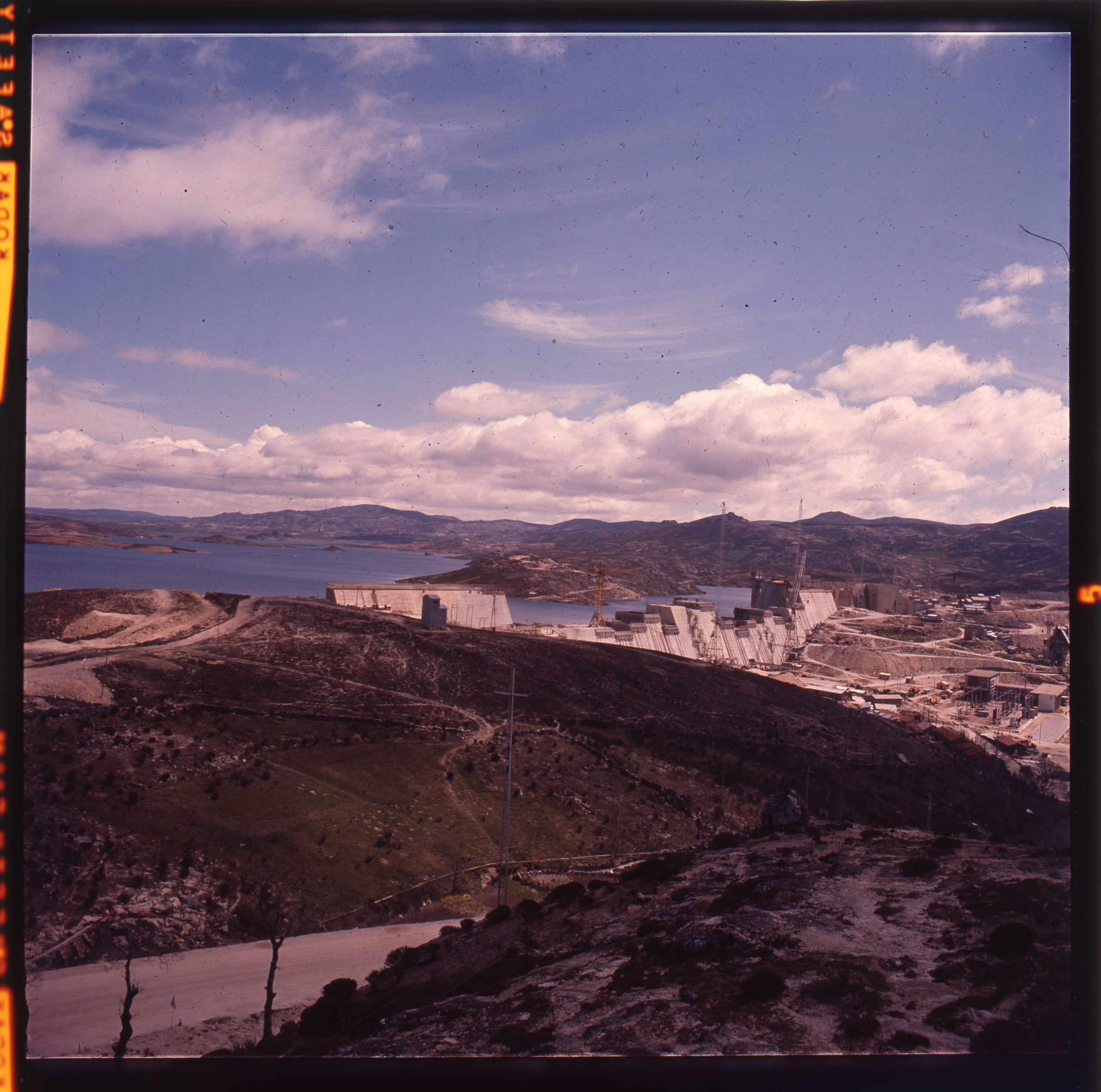1st shift – LABOUR/CONTRACT
NATURAL RESOURCES
A vast natural land with dense forestation, plenty of wood availability, waterfalls and high slopes would be parcels of great interest for industrial implementation and exploration. Would this land be seen today as a natural resource or as a natural reserve?
22. Aerial view from the second factory related to the chemical production in Gabrovo. The factory produced mainly for gunpowder and mining explosives. Ca. 1906. Interactive Museum of Industry, Gabrovo.
Industrialisation brought substantial impact to river systems and landscapes with the implementation of artificially impounded water storages to comply with the demands of cooling, irrigation and hydroelectric generation for its production.
If we could imagine this landscape in the future, how could we describe its natural systems and urban imprint impacts?
23. View of the construction of a HICA dam (Cávado river hydroelectric plant). 1945-1964. Teófilo Rego Archive, Casa da Imagem – Manuel Leão Foundation, Vila Nova de Gaia, Portugal.
Natural resources are all the elements made available by nature that can be used in different human activities. For example, geological resources – rocks, ores and mineral deposits, natural or mineral-industrial mineral waters; or hydro resources – water in its different states and reservoirs. Natural resources have been classified according to their availability: renewable and non-renewable/finite or exhaustible. The first are all those considered inexhaustible, such as sunlight and wind. The finite or exhaustible resources are those that are not renewed or that the regeneration period is very slow, as is the case of oil, iron, copper, among others. The exploitation of some natural resources for industrial purposes in recent decades has compromised the natural regeneration of these same resources. For this reason, the protection and promotion of natural resources have been the target of numerous international actions promoted by the United Nations Environment Programme (UNEP), as they are considered essential to the survival of humanity. The work developed by UNEP has also focused on the recognition and appreciation of the role of women in natural resource management.
It is also important to note that the strategic importance given to natural resources is associated with time and space. In other words, the value assigned to natural resources varies according to the era – Pre-Industrial, Industrial Revolution, Digital Revolution – the political power and the territorial dimension – local, regional, national or international scale – in which these resources are located. Their exploitation also varies according to the available education, i.e. technical culture – technology and know how.

